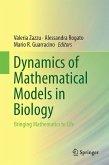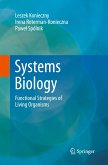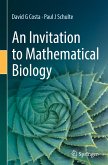This seminal, multidisciplinary book shows how mathematics can be used to study the first principles of DNA. Most importantly, it enriches the so-called "Chargaff's grammar of biology" by providing the conceptual theoretical framework necessary to generalize Chargaff's rules. Starting with a simple example of DNA mathematical modeling where human nucleotide frequencies are associated to the Fibonacci sequence and the Golden Ratio through an optimization problem, its breakthrough is showing that the reverse, complement and reverse-complement operators defined over oligonucleotides induce a natural set partition of DNA words of fixed-size. These equivalence classes, when organized into a matrix form, reveal hidden patterns within the DNA sequence of every living organism. Intended for undergraduate and graduate students both in mathematics and in life sciences, it is also a valuable resource for researchers interested in studying invariant genomic properties.
"The book presents itself as a inclusive introduction to nucleotide and k-mer frequencies in genomes across the tree of life, having as its focal point the Chargaff parity rule. ... The book is written in accessible terms and presents itself as an optimal first exposure to the interdisciplinary field of mathematical biology. It can be enjoyed by a wide range of audiences, but its appeal consists in the possibility of it being read by younger readers." (Irina Ioana Mohorianu, zbMATH 1395.92002, 2018)
"The volume is appropriate for anyone interested in computational biology and synthetic biology. It is short and easy to read, and provides a refreshing view on many aspects of DNA structure at the level of abstraction of strings over a very short alphabet. The author shows very clearly and convincingly that the question ofwhat is the actual code of life is far from answered." (Sara Kalvala, Computing Reviews, July, 2018)
"The volume is appropriate for anyone interested in computational biology and synthetic biology. It is short and easy to read, and provides a refreshing view on many aspects of DNA structure at the level of abstraction of strings over a very short alphabet. The author shows very clearly and convincingly that the question ofwhat is the actual code of life is far from answered." (Sara Kalvala, Computing Reviews, July, 2018)








